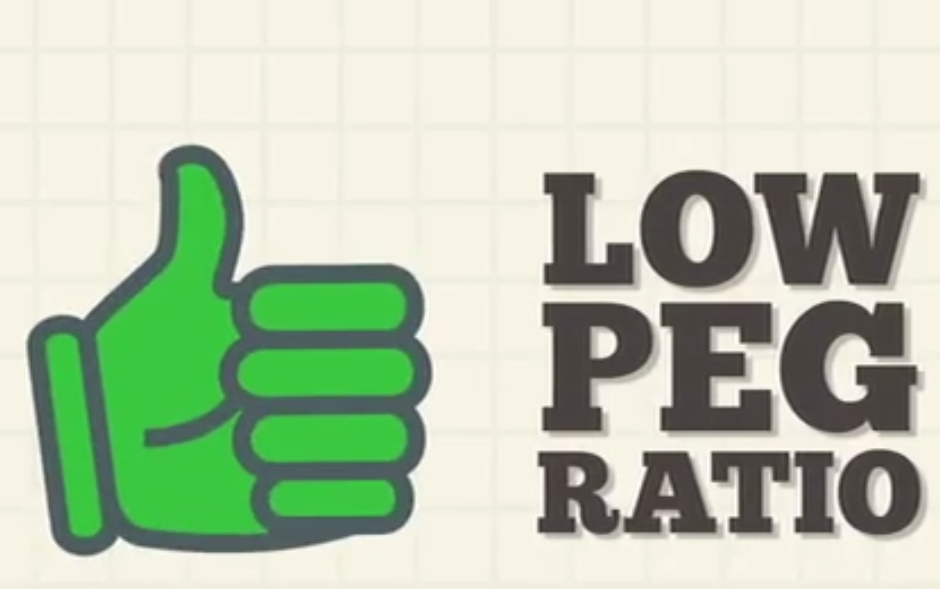Price to Earning Growth ratio (PEG)
A variation on the P/E ratio is the price-to-earnings-to-growth ratio, or PEG.
The PEG ratio is calculated as a company’s price-to-earnings (P/E) ratio divided by the growth rate of its earnings for a specified time period.

Figure 6.5: PEG ratio
PEG ratios can be termed “trailing” if using historic growth rates or “forward” if using projected growth rates.
A low P/E ratio may suggest that a stock is undervalued and therefore should be bought – but factoring in the company’s growth rate to get its PEG ratio can tell a different story. If there is not growth in earnings, it would not be as good as if there is positive and significant growth. One could be more confident buying an undervalued stock (low P/E) with large growth (Low PEG).
Lets consider an example:
Company A
Price per share = $46
EPS this year = $2.09
EPS last year = $1.74
P/E ratio = $46 / $2.09 = 22
Earnings growth rate = ($2.09 / $1.74) - 1 = 20%
PEG ratio = 22 / 20 = 1.1
Company B
Price per share = $80
EPS this year = $2.67
EPS last year = $1.78
P/E ratio = $80 / $2.67 = 30
Earnings growth rate = ($2.67 / $1.78) - 1 = 50%
PEG ratio = 30 / 50 = 0.6
The lower P/E ratio could make company A look more attractive (one could get more return for less money invested). But compared to Company B, it doesn’t have a high enough growth rate to justify its P/E. Company B is trading at a discount to its growth rate and investors purchasing it are paying less per unit of earnings growth.

Figure 6.6: Low PEG is better
As a broad rule of thumb, some investors feel that a PEG ratio below one is desirable. PEG values smaller than one suggest that the price of the stock is low compare to the anticipated growth (i.e., a good hint to buy). Note, however, that stock price can be affected by many other factors.